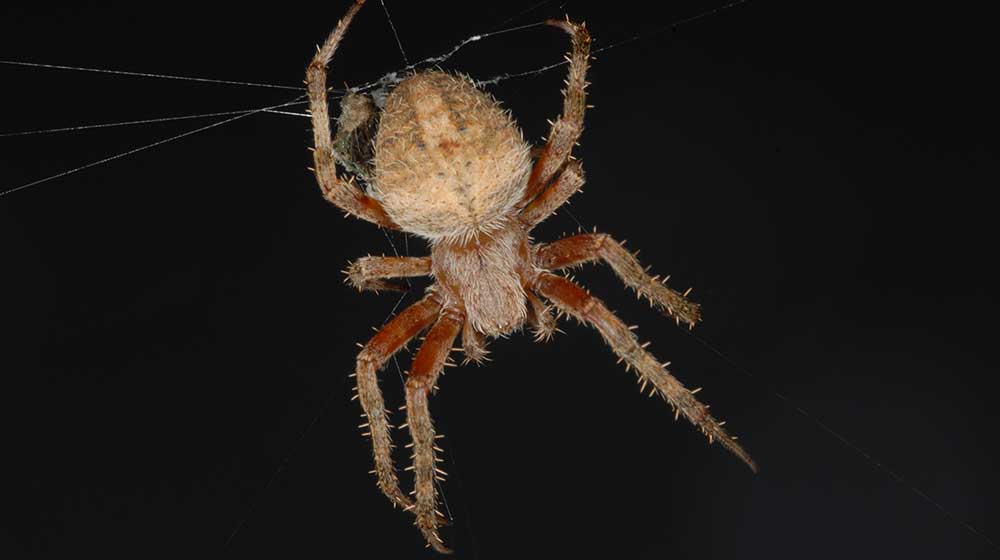Hentz Orbweaver Vol. 2, No. 33

Neoscona crucifera
Order: Araneae
Family: Araneidae
Hentz orbweavers are also known as spotted orbweavers because of two distinct white spots they have on the underside of their abdomen, and the “crucifer” portion of their Latin name is due to the embossed cross-shape they have on the top side of their abdomen. These spiders are very familiar to hunters, hikers, gardeners, and anyone else who spends time outdoors in the fall. They build their wagon wheel-shaped webs about chest high along the edges of woods and across pathways where moths and other flying insects are likely to fly, and where we can’t help but walk into them. Fortunately, although they are large, with mature females ranging from about ½ inch to ¾ inches in length, Hentz orbweavers are not seriously venomous and rarely bite humans.
Another reason Hentz orbweavers become so much more noticeable in the fall is that they begin leaving their webs up during the daytime. Earlier in the summer, the immature spiders take their webs down in the early morning and hide in nearby vegetation. They do this to make it more difficult for mud daubers to find them. Hentz orbweavers are favorite prey of both our common mud dauber species. Break open a mud dauber nest and you will likely find some paralyzed Hentz orbweavers waiting to be eaten by the mud dauber larvae. Once female spiders become mature in the fall, they begin leaving their webs up in the daytime, and as temperatures become cooler, it is not uncommon to see females still resting on their web during the day.
Hentz orbweavers will also readily build their webs around homes, near entryways, and on porches, decks, and other places where exterior lights are left on at night. Lights attract large numbers of insects, resulting in easy-pickings for the orbweavers. Some homeowners enjoy having this miniature wildlife to observe during the fall, but others are uncomfortable having such large spiders too close to the door, deck, or patio.
Control: Control is not usually required or recommended. Use a broom to relocate any spiders that are building their webs too close for comfort.
Blake Layton, Extension Entomology Specialist, Mississippi State University Extension Service. The information given here is for educational purposes only. Always read and follow current label directions. Specific commercial products are mentioned as examples only and reference to specific products or trade names is made with the understanding that no discrimination is intended to other products that may also be suitable and appropriately labeled.
Sign up to receive Bug's Eye View.

